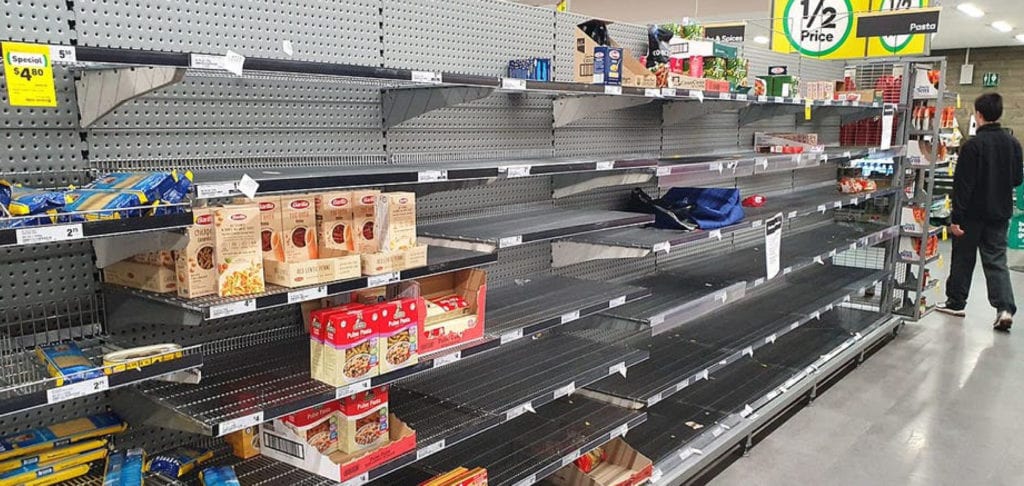Food Retail is all about working with speed, striving for agility, and mastering the art of customer delight – giving what they want, where they want, and when they want – all of this in a cost-effective manner.
No wonder accurate and timely demand forecasting is the epicenter of focus for supermarket retailers. However, the COVID-19 pandemic has taught them a lesson or two.
- It has left store shelves high and dry with quickly vanishing daily essentials, coupled with changing preferences in the product, channels, pricing, and promotions.
- It has shown how a mere pandemic can alter the global landscape of demand and supply dynamics that were taken for granted thus far.
- Most importantly, it has reinforced the importance of near real-time demand forecasting to create long term supply chain efficiencies.
As consumer behavior has radically evolved over the past year, rising market volatility has highlighted the need to respond and react almost immediately to changes in the demand-supply network. These paradigm shifts have ultimately exposed the limitations of traditional forecasting techniques.
Making Accurate Near-Term Demand Forecast a Reality for Food Retailers with Demand Sensing
Today’s food market and supply chain conditions are anything but “normal” with hyperdynamic fluctuations caused by economic, climatic, geographical, and political influences.
Supermarket owners are working against time to ensure every location, shelf, and SKU profitably performs by ensuring consumers can get what they want at the right time, place, and location.
The margin for error is low as retailers cannot accommodate a month-long lag time to replenish stocks or receive vital information about fluctuating sales cycles.
Food retailers are unable to keep pace with unpredictable socio-economic and environmental conditions using traditional long term forecasting methods. This is where technology steps in to make path-breaking changes to accuracy, speed, and demand forecasting consistency.
Further, with rising input prices continuing to increase the cost of consumer packaged goods, supermarket retailers are turning to advanced demand intelligence tools to accurately predict how shoppers will react to different price points.
Packed with SKU-specific, item-level, and store-related data linked to historical purchasing behavior, demand intelligence engines are also empowering grocers to optimize promotions.
Creating a Superstore with Accurate Near-Term Demand Signals
Demand Sensing focuses on overcoming traditional forecasting limitations by constantly minimizing the time lag between market-driven events and the subsequent reaction.
With Demand Sensing, supermarket retailers can do a great job planning and responding to short-term changes in demand. It is sensitive to sudden, immediate, and real-time demand fluctuations that most traditional approaches fail to respond to.
Reduce Planning Cycles + Step-up OTIF (On-Time-In-Full)
Organizations using traditional demand forecasting tools can experience a large gap between the demand planning forecast and actual shipments. This can create long-lasting impacts on the supply value chain and frequency of OTIF (on-time-in-full).
By converting data points into actionable insights using AI-driven analytical tools complemented with the automation of daily tasks, demand sensing helps significantly collapse planning cycles, eliminate risks of inventory over-stock or stockouts, and build concrete plans for higher OTIFs.
Leverage POS Data
Demand Sensing capabilities can help supermarket retailers tap into granular data across Point of Sale (POS) and seasonal promotion based competitive pricing to generate a more accurate demand plan.
This information can be highly useful to help retailers accurately sense market opportunities and stock up inventory based on short team and real-time allocation and replenishment plans.
Optimize Inventory
Demand sensing can help trigger accurate forecasts to estimate and calculate the needed inventory levels, especially across frequent intervals in a shorter period.
This can also ensure retailers create the necessary retail safety stock and avoid stockouts, which can boost cash reserves, increase revenue, and stronger working capital.
Augment Product Mix – Product Mix What-if Scenario
Product mix what-if scenarios include various evaluations of combined product mix strategies along with assortment and SKU portfolio optimization. Product mix calculations for several supermarket product variants need accurate demand forecasts with very marginal scope for error.
Demand sensing that can map the customer behavior and the market sentiment can help improve the product mix at the granular level to deliver delightful customer experiences.
Boost On-shelf Availability
OSA is an important factor in helping supermarket retailers measure the quantities of products available at a particular time on the shelves of various retail outlets. With poor forecasting, retailers lack clarity on the exact OSA, leading to lower availability and interrupted replenishment.
Accurate demand sensing capabilities can calculate the exact OSA and reduce errors while estimating the inventories needed to replenish these items frequently.
Time to Welcome Demand Sensing in the Post-COVID World
The Post-COVID world will witness a sharpened case for demand intelligence using AI and Machine Learning to drive demand forecasting and sensing.
Food retailers are gradually getting used to shorter lead times shrunk into days and weeks rather than months, which leaves them with a very limited margin for errors.
Supermarket retailers need to ensure they are making the right decisions on the go and respond with a greater degree of confidence to short-term market fluctuations.
Demand Sensing poses a highly relevant use case here as it scales to process large data volumes tagged to thousands of SKU, product, and location combinations for dynamic real-time visibility in near-term forecasts.
Food Retailers should leverage demand sensing capabilities for a seamless collaboration across the supply chain to match upstream and downstream requirements – a holistic view of all value stream channels.


